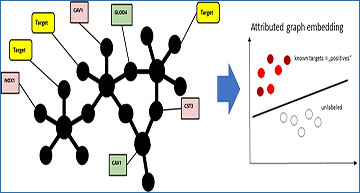In addition to vaccines, the World Health Organization sees novel medications as an urgent matter to fight the ongoing COVID-19 pandemic. One possible strategy is to identify target proteins, for which a perturbation by an existing compound is likely to benefit COVID-19 patients. In order to contribute to this effort, researchers from the Fraunhofer Institute for Algorithms and Scientific Computing have developed GuiltyTargets-COVID-19, a machine learning supported web tool to identify novel candidate drug targets. Using six bulk and three single cell RNA-Seq datasets, together with a lung tissue specific protein-protein interaction network, they demonstrate that GuiltyTargets-COVID-19 is capable of (i) prioritizing meaningful target candidates and assessing their druggability, (ii) unraveling their linkage to known disease mechanisms, (iii) mapping ligands from the ChEMBL database to the identified targets, and (iv) pointing out potential side effects in the case that the mapped ligands correspond to approved drugs. Our example analyses identified 4 potential drug targets from the datasets: AKT3 from both the bulk and single cell RNA-Seq data as well as AKT2, MLKL, and MAPK11 in the single cell experiments. Altogether, the researchers believe that this web tool will facilitate future target identification and drug development for COVID-19, notably in a cell type and tissue specific manner.
Idea behind GuiltyTargets
Information about differentially expressed genes and putative COVID-19 drug targets are mapped to a constructed tissue specific PPI network. Subsequently, GuiltyTargets applies network representation learning to embed the attributed graph into an Euclidean space. This positive-unlabeled model is used to rank unlabeled proteins with respect to their likelihood of being COVID-19 drug targets.
Availability – https://guiltytargets-covid.eu/
Schultz B, DeLong LN, Masny A et al. (2023) A machine learning method for the identification and characterization of novel COVID-19 drug targets. Sci Rep 13, 7159. [article]





